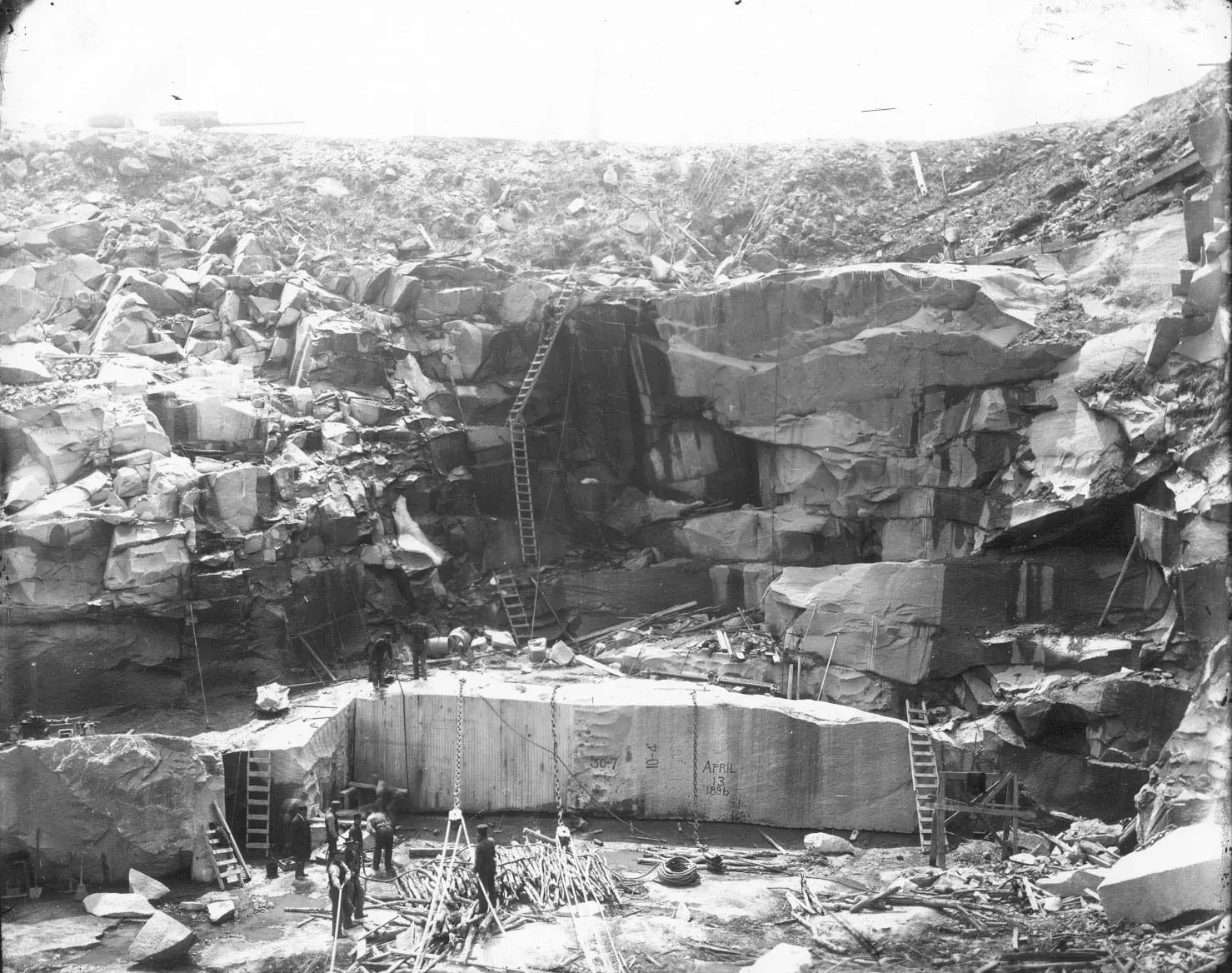The steam whistle blows at eight o’clock and the day begins for the quarryman. He climbs down ladders to the deep hole of the quarry where the work begins. He is wearing sturdy clothes and shoes. Gloves protect his hands from chips of stone that fly from his hammer as he cuts the stone. His tools were almost primitive consisting of drills, chisels, hammers, wedges, crowbars picks and shovels. He provided the power to ‘run’ the tools unlike today when quarrying operations typically include the drilling of holes along the perimeter of the bench, followed by either cutting the stone out of the deposit using saws equipped with diamond wire, or by splitting the stone using hydraulic splitters or small explosive charges.
A quarryman started as an apprentice or perhaps a tool boy. He learned by watching the experienced men. When he was young the tool boy, began his training shuttling tools back and forth to the workers. It was his job to bring dull tools to the blacksmith and return them sharpened. He kept track of which tools belonged to which craftsman.
The quarryman’s work was hard and dangerous. The ground was cold and uneven with loose rock. Blasting sometimes caused loose debris to fly. The stone being lifted by derricks could break away or make the equipment unstable. In the winter when the weather was cold the quarries were dangerous and they were closed for approximately two month leaving the quarrymen without work. Some of them went to quarries down south to work.
A Selection from Household Words: A Weekly Journal. “The granite quarrymen are busily at work; and it is strange to hear the clink of their tools. The region is so silent, so removed from towns and dwellings and people, that any sounds come very sharply upon the ear and the sound of working in granite is very sharp indeed. The granite is very hard, of beautiful texture and glitters brightly in the sunshine; thus the eye has something to look at while the ear is attending to the simple music of the quarrying – veritable music – if the quarrymen do their work steadily.” The Westerly quarries were close to people and the quarry was in deep holes. I wonder if the town people could hear “the music of the quarrying”.
A large piece of stone was freed by drilling holes and filling them with black powder. The chief tools used were a plug or wedge, which is flat on its two opposite surfaces, and two pieces of steel, called feathers, which are rounded on one side and flat on the other. First they must locate grain line patterns to determine how rocks will split The next step is to drill a series of small holes about three quarters of an inch in diameter into the rock in a straight line.
Wedges and feathers are inserted into holes, and the wedges are driven by sledgehammers to split the stone sections. Using this method, rocks can be split along smooth lines by exerting constantly increased pressure evenly on all parts of the rock’s surface. With this pressure, workmen can break the rock into any size and shape. The workmen will then turn the rock intosmaller pieces by plug and feather method, or with hand tools. The plug and feather method is still widely used today.
The modern method of granite quarrying by large quarries uses a channeling machine to make the first cut into a solid bed of rock. It looks like a small locomotive with long chisels on the sides. The machine moves along a track on top of the rock and forces the chisels downward. An explosive method is generally used to break off huge masses of rock from their place in the earth. Strong explosives are best if crushed stone is desired. In both the strong and milder explosive methods, holes are drilled deep into the solid mass. The explosive is put into the holes and set off by slow burning fuses or electric firing. Sometimes hundreds of tons of stone are forced out of the earth in a few huge pieces.
The Hall Shaft provided by the Babcock-Smith House













